Distilling, Distilling 101
How To Make Cuts When Distilling (Distilling Cuts Chart)
Making cuts as a beginner can be quite intimidating.
With the potential of collecting methanol in your jars, it can be frustrating to try to understand when to make cuts, considering every home distiller has its own technique for making cuts.
To make cuts, it’s best to use labeled collecting jars and blend afterward. Use your sense of smell and taste, and take your time to get acquainted with the different characteristics of your distillate at each point in the distillation process. Covering the jars with coffee filters or cheesecloth and letting them sit overnight is also good practice as it allows the harsh chemicals to evaporate, so you know what to discard or keep.
This article discusses how to make cuts when distilling, so you’ll always be confident that you’re only keeping the best possible fractions that come off your still.
Table of Contents
First, What Are Fractions?
During distillation, there are parts of the wash collected as you progress from the beginning to the end of your run. These are called fractions.
These portions are called foreshots, heads, hearts, dunder, tails, and feints. The process of dividing fractions is referred to as “making cuts.”
With column distillation, it’s possible to separate out the individual fractions, but with pot distillation they all blend together.
| Product | Boiling point |
|---|---|
| Acetone | 56.5C (134F) |
| Methanol (Wood Alcohol) | 64 C (147F) |
| Ethyl acetate | 77.1C (171F) |
| Ethanol Azeotrope | 78.2C (172.8F) |
| Ethanol | 78.4C (173.1F) |
| 2-Propanol (rubbing alcohol) | 82C (180F) |
| 1-Propanol | 97C (207F) |
| Water | 100C (212F) |
| Butanol | 116C (241F) |
| Furfural | 161C (322F) |
What Do We Mean By Cuts?
Cuts are where you separate the pure from the impure alcohol during distillation – Essentially deciding to keep the stuff you want, and throw away the stuff you don’t. It involves dividing the drinkable, good-tasting portions from those that contain potent parts of alcohol, like methanol and other chemicals.
You might also make cuts to ‘blend’ different flavors into a whiskey or gin for example.
To effectively make cuts, you need to have insight into the different fractions. Experienced distillers can recognize these fractions by smell as the liquid exits the condenser into collecting jars. But it’s easier said than done for new distillers.
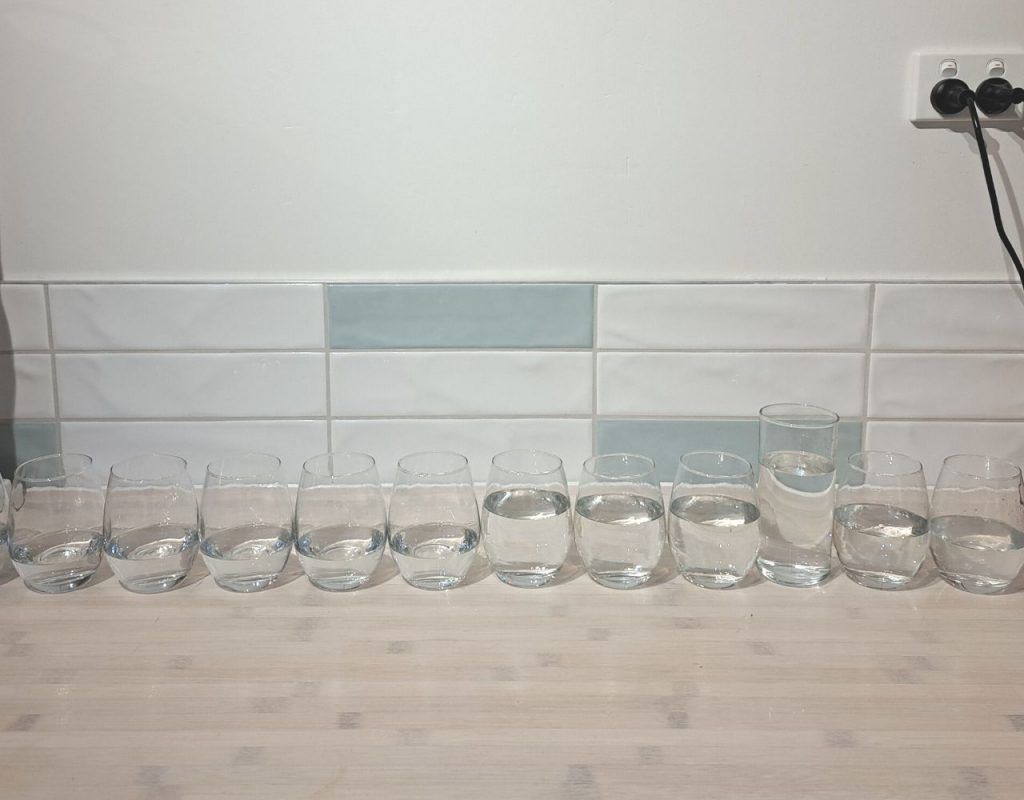
Making cuts helps you decipher which distillate you can keep to bottle or recycle for the next run, or which has to be discarded. Because different components of the wash boil at different temperatures, some distillers use thermometers or alcometers to gauge which fraction is dripping into the jars, allowing them to switch containers when the need arises.
Below is a table summarizing the characteristics of fractions and when to collect them according to your thermometer and/or alcoholmeter reading.
| Fraction | Thermometer and/or Alcoholmeter Reading |
|---|---|
| Foreshots | • Boils at 148-175°F (65-79°C). • Contains acetone and methanol. • Collect 50-150ml of this distillate, then discard it or use for general purposes like cleaning glass. • Smells slightly sweet with undertones of nail polish. |
| Heads | • Contains acetone, ethyl acetate, and traces of ethanol. • Collect when the thermometer reads 176-196°F (80-91°C). • Alcometer reads 80-82% ABV |
| Hearts | • Purest fraction of the run • Start collecting at 80-92% ABV (160 proof) or 197-205°F (°C) • Clean ethanol smell. |
| Tails | • Last part of the distillate. • The thermometer reads 205-208°F (96-97°C) • Alcoholmeter reading drops to about 20% ABV. |
| Dunder | • Fraction is left in the boiler after distilling. • It’s often poured back into the wash to enhance the flavor of a fresh wash. |
| Feints | • The early Tails often recycled in the next batch to extract any good ethanol. |
What Are The Different Distilling Cuts?
Here’s a detailed explanation of cuts.
First of all, it’s important to note that you can use temperature to judge your cut point ONLY when running a well equalised column still. With a pot still, they all blend together, so you’re going to need to rely on your senses to figure out what to keep and what to throw.
Foreshots
This is the first part of the distillate. Foreshots contain methanol and ethyl acetate and are collected when the thermometer reads 148-175°F (65-79°C). This fraction smells slightly sweet with undertones of nail polish.
It’s always discarded or used for general purposes like cleaning glass or lighting fires or BBQs. When making cuts, you’ll typically collect 50-150ml of this distillate for a 20L wash.
Heads
These fractions contain ethyl acetate and traces of ethanol. Heads have a pungent alcohol smell. You can recycle this fraction in your next batch or use it for general purposes. When your thermometer reaches ~79C, then you know you’ve reached your heads. You collect about 150ml of this portion.
| Vapor Temp In Pot Still | 75-80°C |
| Vapor Temp In Column Still | 77-79C |
Hearts
The hearts are the purest fraction of the run. You’ll know hearts are coming through by the clean smell of ethanol. When you take a tiny sip of this portion, you’ll also pick up notes of your wash. The hearts start exiting your condenser at 79C and due to the volume of the azeotrope, it should keep your column locked around 79 – 81 degrees.
| Vapor Temp In Pot Still | Approx 80-95°C |
| Vapor Temp In Column Still | Between 79 and 81C |
Tails
Tails are the last part of the distillate. That’s when most of the ethanol is spent and fusel oils start entering your jars. The tails have a funky – wet dog/damp socks, smell. When your thermometer reads 205-208°F (96-97°C), that’s when you start collecting your tails. At this point, the alcometer reading drops to 10-20% ABV and you should stop your run.
| Vapor Temp In Pot Still | 96-97°C |
| Vapor Temp In Column Still | >81C |
Dunder
Also known as backset, dunder is the fraction left in the boiler after distilling. Dunder is usually poured back into the wash to enhance the flavor of a fresh wash, and it’s often used when making rum. This portion is not only used for taste purposes, but it also creates optimal fermentation – balances the pH and acts as a yeast nutrient.
Feints
Feints are tails recycled in the next batch.
What’s The Risk Of Making Cuts Wrong?
When you make wrong cuts, you can end up with a collection of harmful chemicals such as methanol. Not only will this produce a vile-tasting spirit, but it could make you ill, blind or potentially kill someone.
Now, the risk of actually producing a dangerous amount of these chemicals is very low, but it’s important to be wary of this. More likely, you’ll just end up producing alcohol that doesn’t taste very nice and no one will want to drink it.
Read more: This article discusses how to minimise the amount of methanol you’re producing.
To Make Cuts In Real-Time Or Not?
As a novice, it can be difficult to detect fractions by simply smelling the distillate as it drips into your jar, so you’re most likely to make wrong cuts in real time. In this instance, we recommend you invest in a bunch of collection jars (I use old pickle jars!) an alcoholmeter, and pay careful attention to the reading on your thermometer.
As you get familiar with the process, your recipe, and the equipment, you can switch to making cuts in real time. For example, for a large batch it’s not very practical to collect in hundreds of little jars..
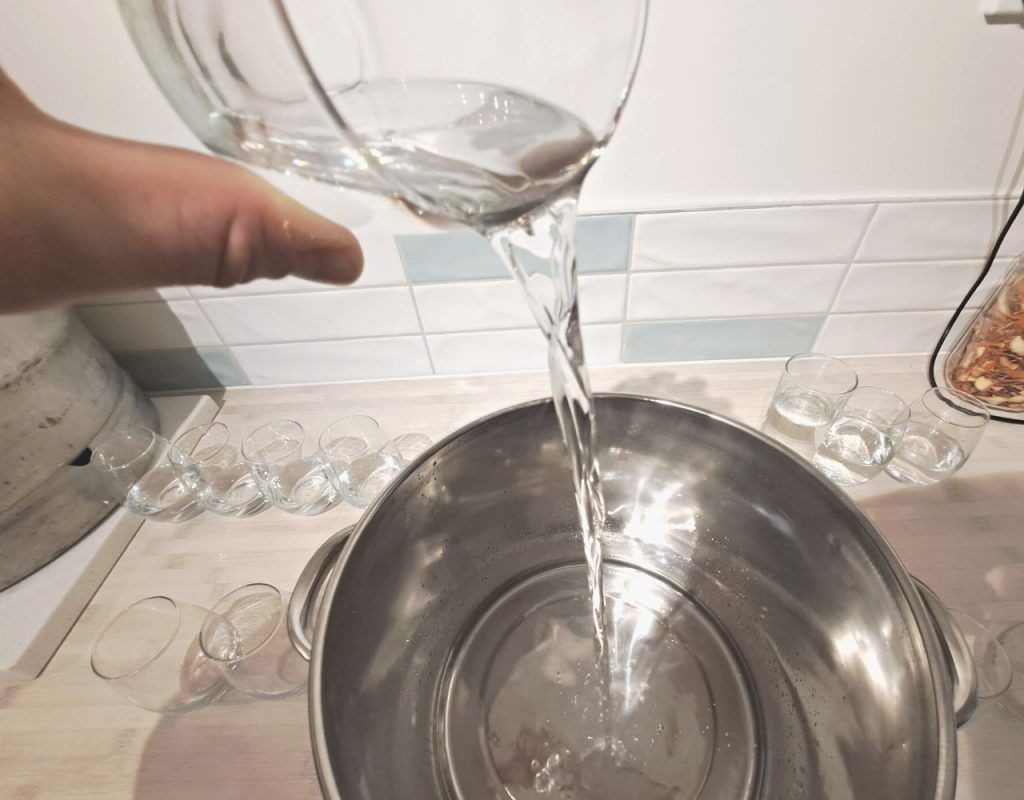
Tip: I’ve been distilling for years and still struggle to make accurate cuts in real time. Instead, I collect in large flasks and then switch to small cuts-jars when I am nearing the cut point. E.g. I’ll collect in 5 small jars when I’m nearing the start of hearts so I don’t accidentally cut too early an contaminate the whole batch!
How To Make Cuts With A Pot Still
As mentioned earlier in the post, making good cuts with a pot still is HARD. All the fractions blend together and you can easily end up with a nasty-tasting product that is far removed from the clean drink you were hoping for.
Here’s our guide to make cuts on a pot still.
What you’ll need
- 10-20 glass collection jars, labeled from 1 to 20
- Alcoholmeter
- Thermometer
- A pot still!
Making cuts
Assuming you’ve assembled and run your still according to your user manual, follow these steps to make cuts.
- Place a glass jar at the exit point of your condenser. Collect the first 50-150ml at 148-175°F (65-79°C) – these are the foreshots. Discard or use for general purposes.
- Collect the next 150ml at 176-196°F (80-91°C), these will be your heads. You can throw away this portion or recycle it in the next batch.
- When the heat of your still reaches 197-205°F (91-96°C), switch glasses and collect the hearts.
- When the thermometer reads 205-208°F (96-97°C), you can start collecting the tails. Wait till your alcometer reads 20% ABV, then turn off your still.
- Cover each of the jars with coffee filters or cheesecloth and let them sit overnight.

How To Make Cuts On A Reflux Still
A reflux still produces a purer spirit because the reflux action pre-condenses and condenses the vapors until the volatile substance (ethanol) exits the still – leaving behind impure substances. But, you’ll still need to collect the foreshots, head and tails.
The benefit of a reflux still is (based on the design) it will be able to compress the heads and tails, to reduce wastage from heads bleeding into hearts etc. They also usually provide a clearer ut point based on column temperature.
Step 1: Heat-Up
To begin, heat up your still according to the user manual. This will vary depending on the type of still you’re using. As you near operating temperature (usually around 77 degrees) turn on the cooling water to your dephlegmator or reflux condenser to ensure 100% reflux.
Step 2: Equalising
Once the still is heated up, it’s time to equalize it. This is the process of stabilizing the temperature in the still to ensure a consistent distillation process.
Run the still in 100% reflux for at least an hour.
This allows the fractions to separate physically in the column.
For example, your ethyl acetate and methanol will sit physically higher in your column than your ethanol. That means when you start to tap them off you can do so without smearing.
Step 3: Foreshots
The first fraction to collect is the foreshots. This fraction contains methanol and ethyl acetate, and you should collect the first of the distillate at 148-175°F (65-79°C). Foreshots are always discarded or used for general purposes like cleaning glass or lighting fires or BBQs.
TIP: I don’t quote volumes like “throw away the first 50ml” because its completely different based off how much you’re distilling, what sort of mash you made and how effectively you’ve compressed your foreshots.
Your fores will be marked by a distinctive acetone or nail polish remover smell. They also sting your eye balls if you hold a glass of it close enough.
Discard all and don’t even think about recycling these.
Step 4: Re-Equalising
After collecting the foreshots, re-equalize the still to stabilize the temperature.
Step 5: Heads
The next fraction to collect is the heads. Heads will still contain some ethyl acetate but now more ethanol and have a pungent alcohol smell.
On my still I can make this cut by temperature and by taste. Heads will run from 77.4 C to 77.7 C (precise I know!)
As soon as the still flicks up to 77.8C I know it’s hearts time.
You can also tell by the burn vs sweetness of the vodka. Dilute the product down to 40% ABV and taste.
Does it burn the back of your throat? Does it taste sharp and pungent? That’s heads.
Does it feel smooth on the back of your throat? Does it taste creamy and sweet? That’s hearts!!
You can recycle it in the next batch (if you really want) or use it for general purposes like the fores. I generally throw out the first half of my heads and recycle the latter, as it will have a higher percentage of hearts in it.
Step 6: Re-Equalising
Re-equalize the still after collecting the heads.
This is to be 100% sure you’ve got them all out. If you collect tails too fast you’ll get some smearing so re- equalising now will force the last little bit of heads to the top.
Step 7: Hearts
The hearts are the purest fraction of the run. You’ll know hearts are coming through by the clean smell of ethanol. The hearts start for me when my column temp is 77.8C and due to the volume of the azeotrope, should keep your column locked around this temperature.
Collect at 92% – 94.5% ABV based on your stills capability, and your urgency. Remember, running fast will lower purity.
My 90% of hearts will run from 77.8 up to around 78.2. Then, the still will rapidly jump to 79 or 80C which tells me I’ve switched into tails.
Step 8: Tails
Tails are the last part of the distillate. That’s when most of the ethanol is spent and fusel oils start entering your jars. The tails have a funky – wet dog/damp socks, smell.
At this point, the alcometer reading will likely drop, and you should stop your run.
I don’t collect tails and recycle them as I find I get very little good alcohol out of them – although it is common to do so.
Making cuts is essential to ensure you’re producing a high-quality spirit that is safe to drink. With the right equipment and a bit of practice, making cuts can become second nature.
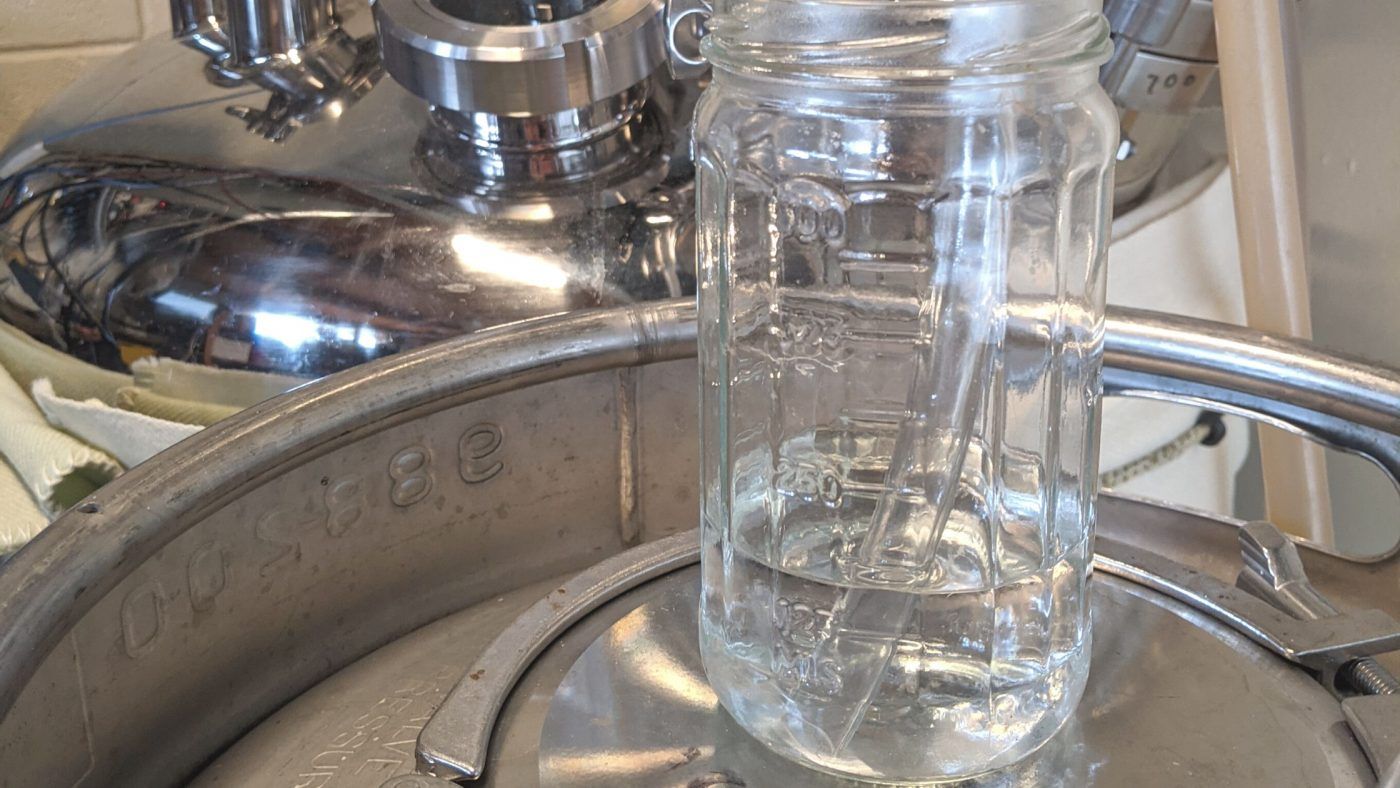
Frequently Asked Questions
Q. How much heads do I need to throw away when distilling?
As a rough indication, when making a 5-gallon (18 liters) batch, throw away 150ml of your heads, and when making 10 gallons (37 liters), you’ll throw away 300ml. However, I don’t Like to quote volumes because it’s completely different based off how much you’re distilling, what sort of mash you made and how effectively you’ve compressed your foreshots.
Q. Can I recycle heads in the next batch?
You can recycle the heads if there’s a flavor you’re trying to extract or you want to try and maximise your ethanol yeild. Because heads contain ethyl acetate (and some ethanol), recycling your heads means you’re increasing the amount of ethyl acetate in your next run, and you’ll have more heads cut in the next batch.
Q. Can I recycle foreshots in the next batch?
You shouldn’t recycle foreshots in your next batch. This fraction contains a harmful amount of methanol and can cause liver, brain, and eye damage. As tempting as it may be to use them to bump your alcohol volume: never recycle them in your next batch.
Conclusion:
When embarking on the home distilling hobby, there are some exciting learning curves you’ll have to overcome – making cuts is one of them. With so many online resources telling you you should rely on your sense of smell, this can be quite daunting if you haven’t yet mastered this skill.
Luckily, there are instruments like alcometers and thermometers that you can utilize to guide you through the whole process. Once you’re comfortable in the distilling craft, you can effectively make cuts in real time without the danger of methanol poisoning.

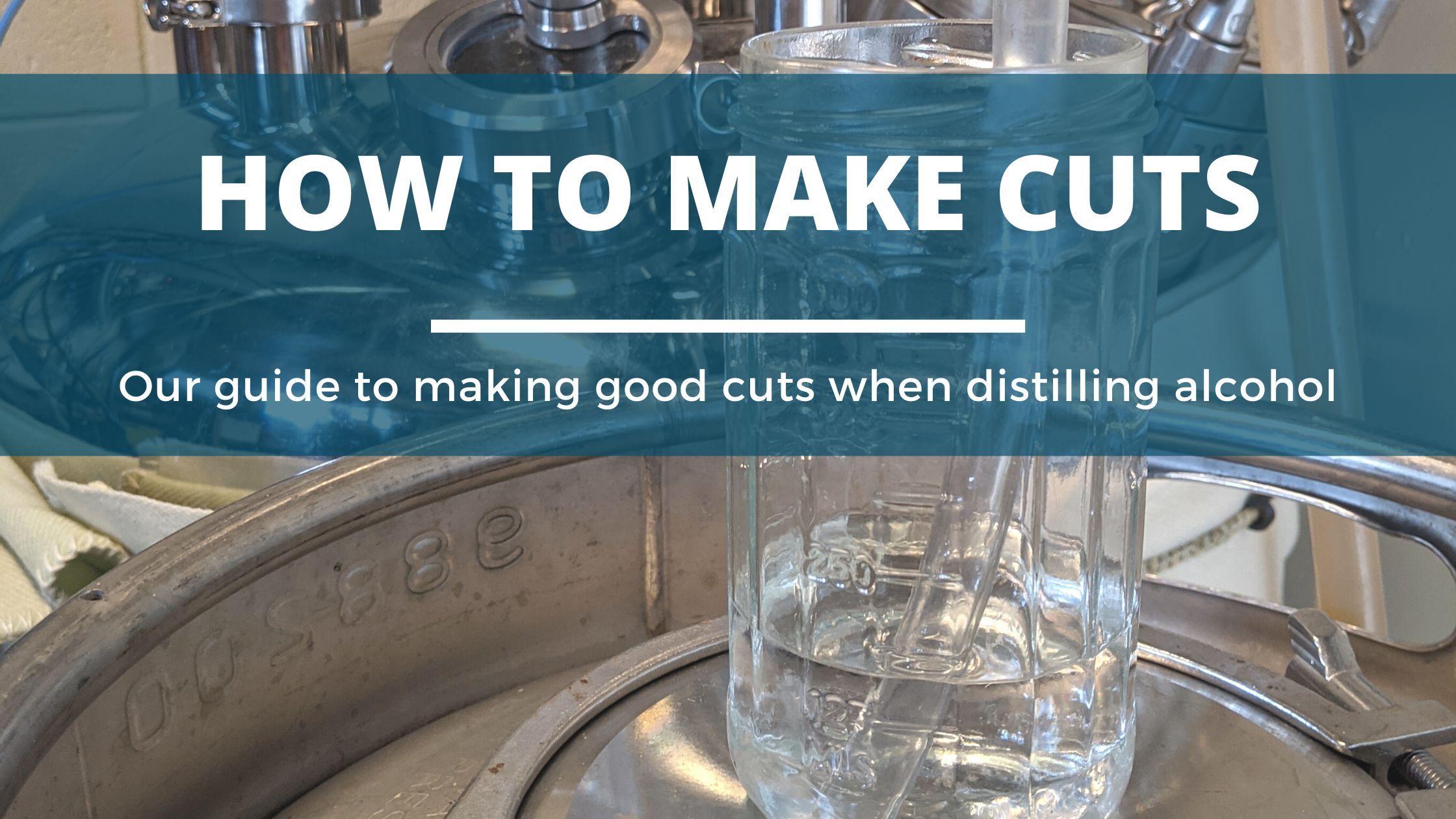

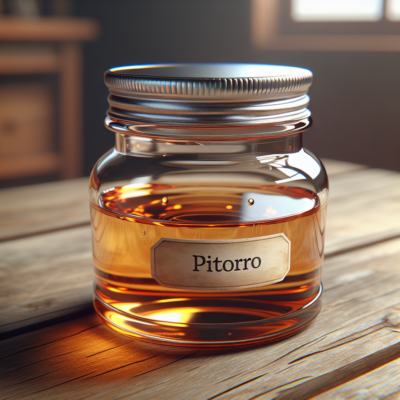


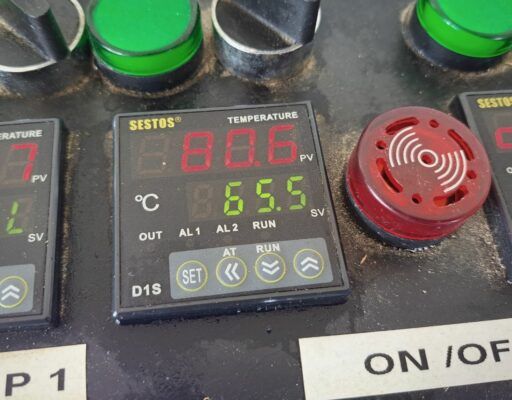
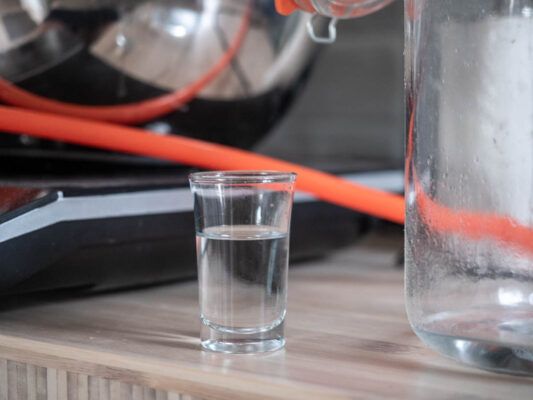
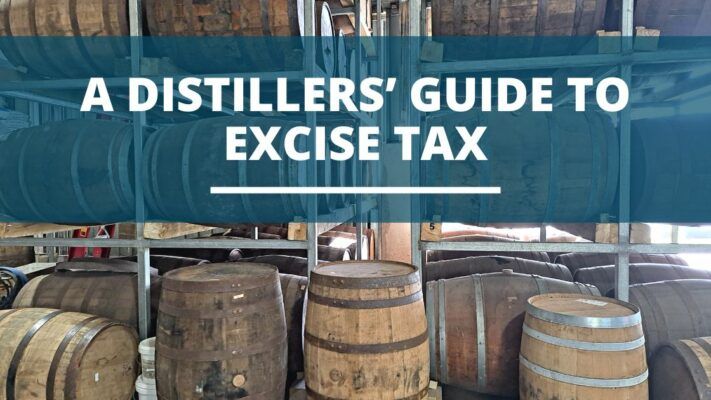
I feel like ‘never drink the foreshots’ should be heavily emphasized -Especially in the charts you used. I imagine some people coming to this might only focus on the chart because it’s the most useful. If they didn’t know to throw it away, they might end up on a cancelled tv show I used to watch. (1000 ways to die. Fun fact: there was an episode about this situation. Guy was a newbie and wanted to celebrate his first batch with some friends. He became permanently blind. I dont remember if he died but considering the show’s name, it might be an easy guess.)
ALSO I found some typos. I get to point them out for you (or at least the ones I see/catch… OOOH A SCAVENGER HUNT! FUN!)
-weird comma: The tails have a funky – wet dog/damp socks, smell.
-comma splice : …as it drips into your jar, so you’re most likely…
-i = I (x2): … when i am nearing the cut point… so i don’t accidentally cut too early.
-an = and: … an contaminate the whole batch!
-comma splice: … at 176-196°F (80-91°C), these will be your heads.
-ut = cut: … provide a clearer ut point based on column…
-missing comma: … temperature (usually around 77 degrees) turn on the cooling…
-its = it’s: … because its completely different based off how much…
-thing = think: Discard all and don’t even thing about recycling these.
-i = I: On my still i can make this cut…
-buy = by: …can make this cut buy temperature and by taste.
-i = I: …(precise i know!)
-i = I: … flicks up to 77.8C i know…
-That = That’s: … creamy and sweet? That hearts!!
-thow = throw: I generally thow out the first half of my heads…
-re equalising = re-equalising (and a run-on sentence [consider a period between ‘smearing’ and ‘so’]): If you collect tails too fast you’ll get some smearing so re equalising now will force the last little bit of heads to the top.
-Consider revising this statement found here [potential solution in bracket]: … azeotrope, [you?] should keep your column locked around this temperature.
-Missing comma [between ’80C’ and ‘which’]: … the still will rapidly jump to 79 or 80C which tells me I’ve switched into tails
.i = I: … recycle them as i find I get very little…
– : = , [the colon should be a comma maybe]: … bump your alcohol volume: never recycle…
I wonder if I found all of them. Please don’t consider this as disrespect. I’m just trying to help. Plus it’s kinda fun for me. I used to help my english teacher look over student’s creative writing drafts. Mainly my peers would come to me for proofreading and I liked doing that. The feeling of helping someone feels good to me. You seem to be a very good writer so I doubt my points would make you better at it. If anything, it’ll help new visitors who would be able to read your post with a smooth flow and not get interrupted with a grammar mistake.
Ps: what’s your stance on oxford commas? I like using them because sometimes an item in a list could include a conjunction (ie: Popular 70’s shows: The Brady Bunch, Three’s Company, and Sandford and Son’s.)
Wow! Thanks for the feedback and thourough proof read. You might have a calling as a professional editor! Let me work through these fixes. I’m glad you’re enjoying the site 🙂